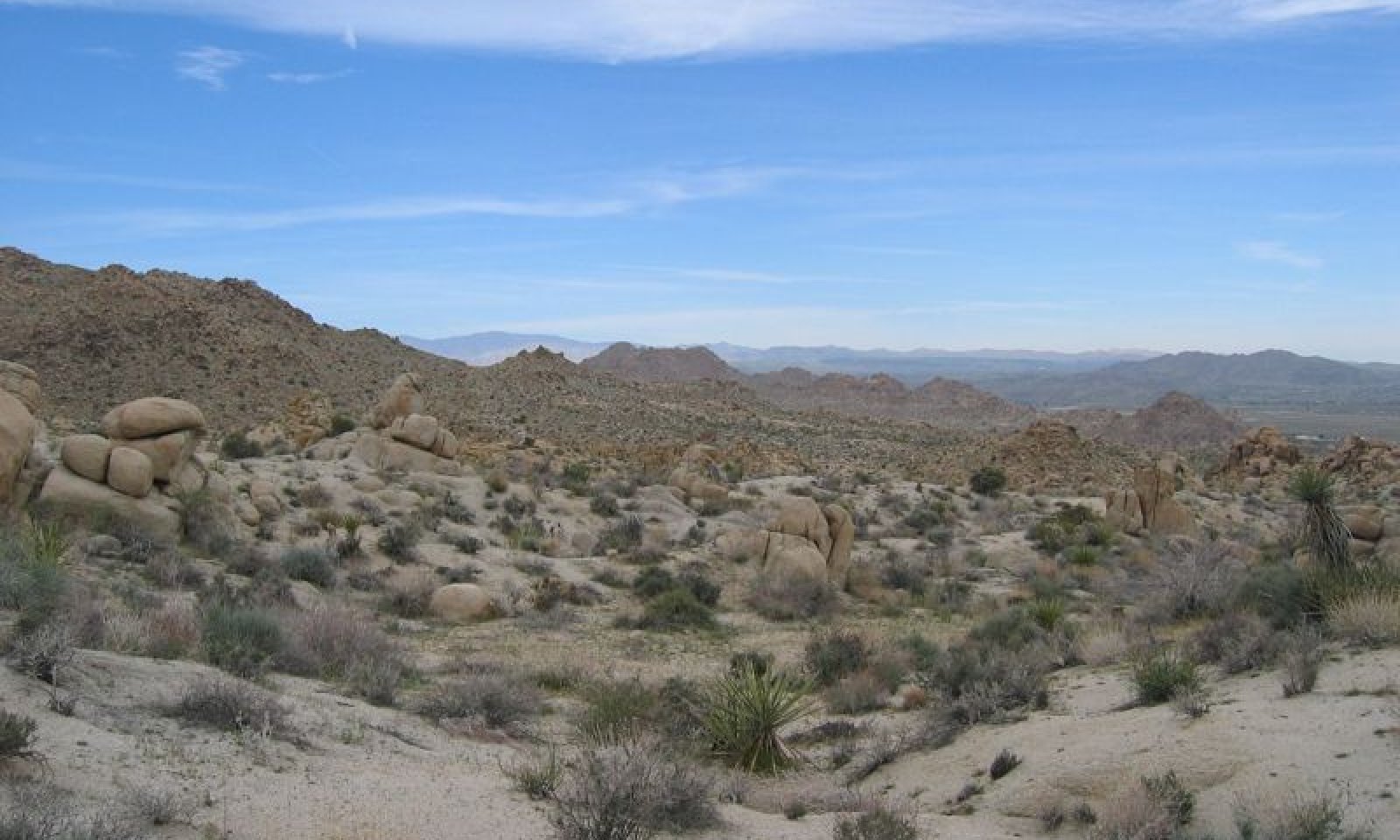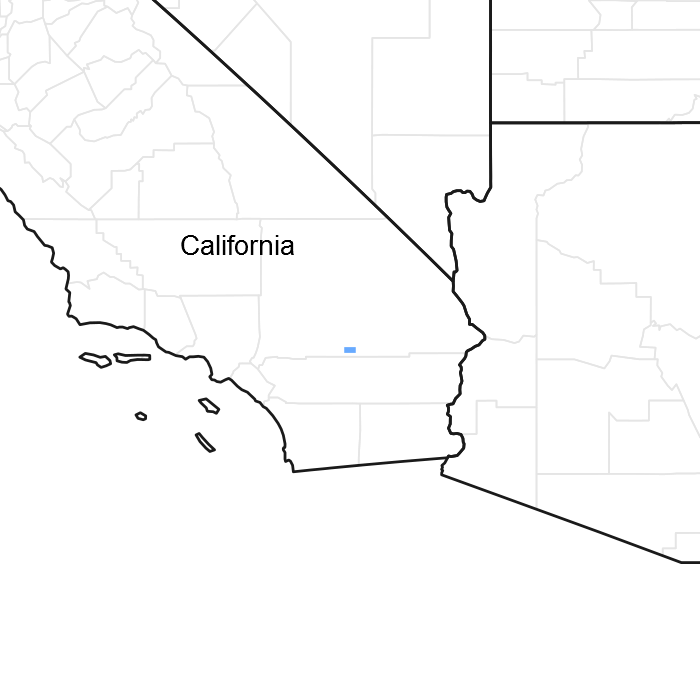

Natural Resources
Conservation Service
Ecological site R030XB171CA
Dissected Pediment
Accessed: 12/22/2025
General information
Provisional. A provisional ecological site description has undergone quality control and quality assurance review. It contains a working state and transition model and enough information to identify the ecological site.

Figure 1. Mapped extent
Areas shown in blue indicate the maximum mapped extent of this ecological site. Other ecological sites likely occur within the highlighted areas. It is also possible for this ecological site to occur outside of highlighted areas if detailed soil survey has not been completed or recently updated.
MLRA notes
Major Land Resource Area (MLRA): 030X–Mojave Basin and Range
MLRA Description:
Major Land Resource Area (MLRA) 30, Mojave Desert, is found in southern California, southern Nevada, the extreme southwest corner of Utah and northwestern Arizona within the Basin and Range Province of the Intermontane Plateaus. The climate of the area is hot (primarily hyperthermic and thermic; however at higher elevations, generally above 5000 feet, mesic, cryic and frigid) and dry (aridic). Elevations range from below sea level to over 12,000 feet in the higher mountain areas found within the MLRA. Due to the extreme elevational range found within this MLRA, Land Resource Units (LRUs) were designated to group the MLRA into similar land units.
LRU Description:
This LRU (designated by ’XB’) is found across the eastern half of California, much of the mid-elevations of Nevada, the southernmost portions of western Utah, and the mid-elevations of northwestern Arizona. Elevations range from 1800 to 5000 feet and precipitation ranges from 4 to 9 inches per year, but is generally between 5-6 inches. This LRU is characterized primarily by the summer precipitation it receives, ranging from 18 – 35% but averages 25%. Summer precipitation falls between July and September in the form of rain, and winter precipitation falls starting in November and ends between February and March, also mostly in the form of rain; however it does receive between 0 and 3 inches of snow, with an average of 1 inch. The soil temperature regime is thermic and the soil moisture regime is typic-aridic. Vegetation includes creosote bush, burrobush, Nevada jointfir, ratany, Mojave yucca, Joshua tree, chollas, cactus, big galleta grass and several other warm season grasses. At the upper portions of the LRU, plant production and diversity are greater and blackbrush is a common dominant shrub.
Ecological Site Concept -
This ecological site occurs on dissected, sloping pediments punctuated by monzogranite outcrops at elevations of 2900 to 3800 feet. Soils are very shallow to shallow. Production reference value (RV) is 242 pounds per acre and ranges from 76 to 400 pounds per acre depending on annual precipitation and annual species production. The site is weakly dominated by blackbrush (Coleogyne ramosissima) with a high diversity of secondary shrubs present, including burrobush (Ambrosia dumosa), Parish’s goldeneye (Viguiera parishi), desertsenna (Senna armata), creosote bush (Larrea tridentata), and catclaw acacia (Acacia gregii). Additional run-on from adjacent outcrops, and flow in interfluves provides moisture for creosote bush, catclaw acacia and desertsenna, which tend to occupy low points among the pediment. Although blackbrush is well-adapted to shallow soils, this ecological site is found at lower elevations. Blackbrush does not thrive in these warmer climates and individuals are stunted and less competitive than in cooler climates.
Data ranges in the physiographic data, climate data, water features, and soil data sections of this Ecological Site Description are based on components that are 10 percent of a mapunit or greater.
Associated sites
| R030XB005NV |
Arid Active Alluvial Fans This ecological site is found on adjacent fan aprons. Creosote bush (Larra tridentata) and burrobush (Ambrosia dumosa) are dominant species. |
|---|
Similar sites
| R030XB166CA |
Dissected Pediment, Cool This ecological site occurs on pediments with cool thermic soils. Blackbrush (Coleogyne ramosissima) and California juniper (Juniperus californica) are dominant species. |
|---|---|
| R030XB225CA |
Warm Sloping Pediments This ecological site occurs on pediments and is co-dominated by Hall's shrubby spurge (Tetracoccus hallii) and burrobush (Ambrosia dumosa). |
| R030XB228CA |
Warm Shallow Pediments This ecological site occurs over a slightly lower precipitation range and warmer temperatures. Creosote bush (Larrea tridentata) and burrobush (Ambrosia dumosa) dominate. |
| R030XB188CA |
Cool Shallow to Moderately Deep Fans R030XB188CA occurs on pediments overlain with a thicker layer of alluvium. The site is more productive, and creosote bush (Larrea tridentata) and blackbrush (Coleogyne ramosissima) dominate. |
| R030XB221CA |
Loamy Fan Remnants And Pediments This ecological site occurs on pediments and fan remnants with moderately deep soils to a duripan. Hall's shrubby spurge (Tetracoccus hallii) is an important species. |
Table 1. Dominant plant species
| Tree |
Not specified |
|---|---|
| Shrub |
(1) Coleogyne ramosissima |
| Herbaceous |
Not specified |
Click on box and path labels to scroll to the respective text.

